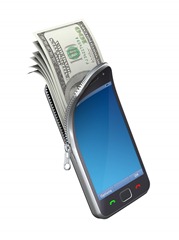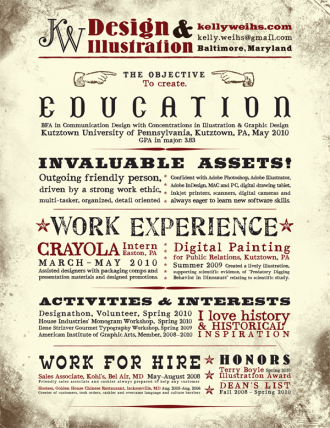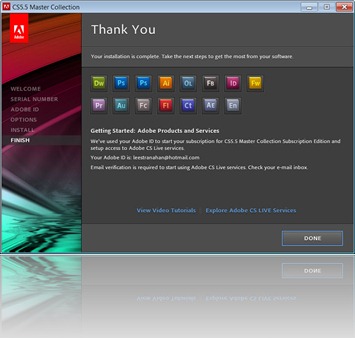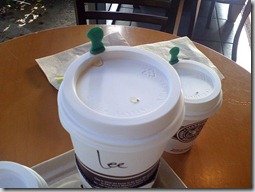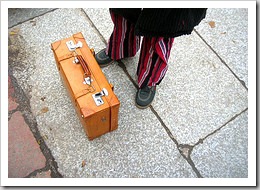Creative people, entrepreneurs and especially creative entrepreneurs would do well to pay attention to Steven Pressfield’s new book Do the Work for two reasons.
for two reasons.
First, Pressfield has written another modern classic to follow-up The War Of Art: Winning the Inner Creative Battle, his wonderful and inspiring book about overcoming what he calls Resistance (with a capital R) and getting your creative work completed.
Second, the book’s release is the masterful job that publisher The Domino Project (a brainchild of my marketing hero Seth Godin) has done launching the book.
Both the book itself and the strategies behind its release contain valuable, potentially very profitable lessons. I’m going to break down some of those lessons in a few different posts.
The Book
If you do any kind of creative work at all — from writing to painting and music to designing houses to starting companies — go get this book right now. It will kick your butt and give you some clear practical suggestions for starting and completing projects. Plus you can get it free – FREE, do you hear me?
This FREE part can’t be emphasized enough. You can go and get the book in its electronic Kindle edition at no cost. If you don’t have a physical Kindle, no problem because the Kindle software is also free and works on PCs, Macs, iPads and all manner of mobile devices. 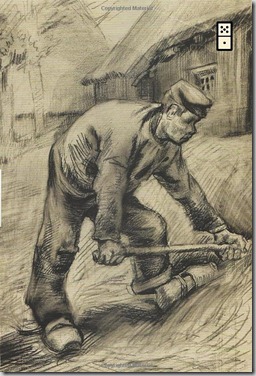
Cost aside, this is an inspiring and practical little manifesto that is designed to help you beat the demons they keep great work and big changes from coming to life. Pressfield and publisher Godin both feel passionately that you, dear reader, have big important things inside you and that learning how to get those projects started, shepherded through difficult times and finally, gloriously shipped is a teachable skill.
Do The Work! is the kind of book that you can read in an hour or two, assuming you don’t leap up from the couch, grab paper and a pen and start furiously working out the beginning middle and end of a new masterpiece. Pressfield describes his audience as "artist and entrepreneurs in the trenches” and he’s a no-nonsense drill instructor who wants you and your dreams to flourish. He’s written a tough, muscular little book that’s Strunk and White for your aspirations.
I share Pressfield and Godin’s belief in people’s potential, so I say without hesitation – you owe it to yourself to read this book.
The Marketing Lessons – Part 1
Before I start running down marketing lessons, let me tell you how I came to hear about Do The Work!. I was taking a nap two days ago and I heard some commotion downstairs. Our condominium has a bad foundation and so when the front door gets yanked and wrestled open, there’s a huge and ugly sucking/popping sound. The only upside to this is that usually means that we got a delivery from Amazon.
When I came downstairs later and asked my wife about it, I assumed it was an order of cat food or paper towels (yes, Amazon sells cat food and paper towels) but, no – it was a book. I hadn’t ordered a book, however. My eyesight is bad so I do almost all my book reading on Kindle.
I turned the book over in my hands, squinting and try to make some sense of it. I noticed it was written by Steven Pressfield and liked the cover, which I later found out is a drawing from Van Gogh. Then I found the note that came with it from Ishita Gupta and realized that I’d been sent the book as a gift from Seth Godin’s office. I had interviewed Seth a couple years back the part of the launch for his book Linchpin…but wow. Nice.
Lesson One: Give Gifts (Real Gifts)
This brings us to a great marketing lesson that’s really just a lesson in the whole "let’s make being part of humanity enjoyable” thing. Give real gifts and by real I mean, without any expectation of a quid pro quo.
The note I got with the book didn’t tell me to review it, plug it or anything else. They just sent it to me. No expectations.
They sent you a gift, too. As I’ve mentioned, in the rollout of the book the Kindle edition of Do The Work! is free. Like the free beer free. Like Cory Doctorow free. Like go get it free.
Like go get it free.
The smart marketing reason to give gifts like this is covered very well in the classic book Influence but I’m not going to sully the gift that I got by assuming that there was an ulterior motive that somehow the real reason for the gift. I think the gift was a gift. It felt like a gift not an obligation, which is exactly how a gift should feel.
People who have physical Kindles received a free copy, too — which leads to what may have been the one minor misstep I’ve seen in the rollout.
Lesson One And A Half:Don’t Give Them To People Who Don’t Want Them
Hugs are nice. However, going up to strangers and starting to hug them is creepy.
Do The Work! has a small number of one star reviews on Amazon right now from people who are mad they were given the gift of Do The Work! on their Kindle. On one hand, I think the world would be better off if those people would shut up and read the book. On the other hand, I get it. They didn’t know it was coming and so the idea that Amazon is essentially book spamming them is confusing.
The problem is that there is no precedent. On my Nook, Barnes & Noble has been pushing content to me from day one. This creates an expectation. Maybe that’s an expectation that Amazon is trying to set up but either way it’s created some bad reviews so I’ll call it a mistake.
Lesson Two: Create Lots of Buying Options
This is a tremendously important lesson for anyone creating products – give your buyers the option of different tiers of pricing. Todd Sattersten in his excellent book Fixed to Flexible describes this as a "good, better, best" model model of pricing and it’s something that every modern business should be taking advantage of.
Just look at how many options you have for acquiring Do The Work!
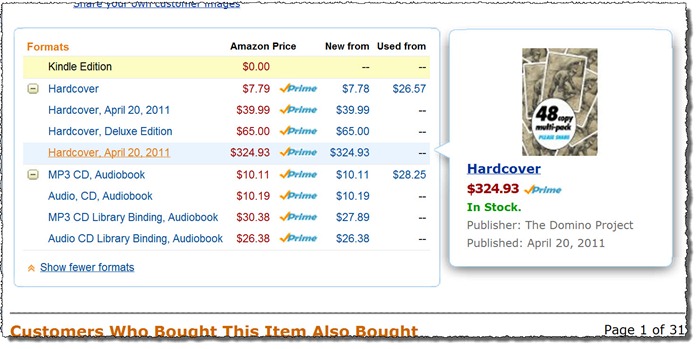
So we’ve got the free Kindle edition. There’s an audio book edition. There’s the physical object of the book itself for around 10 bucks and we can also buy it n packs of five or 48 to give as gifts. Then we’ve also got – drumroll, please — the $65 limited quantity deluxe edition.
This limited quantity, deluxe edition includes a signed copy of Do the Work, and a hand-engraved metal placard, a hefty piece of burnished steel laser engraved with a 16th century image of St. George slaying the dragon with a reminder to BEAT RESISTANCE. Approximate size 3 x 5 – ideal for any desktop.
The Domino Project chose this laser engraved steel plate because it’s hefty, strong, and unbendable, which is exactly what we think Do the Work invokes. Inspired by the important lessons shared in the text, this limited edition collectible is a visual reminder that you must slay the dragon if you wish to succeed. It’s a signpost on the road to finishing the work that reminds you to always "Beat Resistance."
Lots of ways to buy and I guarantee you a bunch of people who have the free edition today are going to buy physical copies to give as gifts in the future.
Lesson Three: Forget Your Own Economic Experience
Let’s talk more about the Deluxe Edition. If you are one of those people who are saying to themselves, "Who the hell would spend $65 on a book they could get for 10 bucks or even for free?”….come closer, because you really need to hear this.
One of the reasons I want to focus on this is because it’s something crucial to understand in today’s economy. No matter how bad you may think the economy is and no matter how difficult your own personal financial experience is, you need to accept the following truth – there are people out there that don’t give any thought to price when it comes to making buying decisions.
 In other words, maybe right now you’re pinching your pennies. No judgment, me too. Maybe when you go to the grocery store and are shopping for milk, you really have to go over all your options and find the gallon of cow juice that’s on sale. You might be in a position where the $.50 you save on milk means you can buy two more packets of Ramen.
In other words, maybe right now you’re pinching your pennies. No judgment, me too. Maybe when you go to the grocery store and are shopping for milk, you really have to go over all your options and find the gallon of cow juice that’s on sale. You might be in a position where the $.50 you save on milk means you can buy two more packets of Ramen.
But that’s not everybody.
There are people in the world who just go and pick out the milk that they want. If they want Horizon Organic 2% and its eight dollars a gallon they just pluck it from the refrigerated display case and put it in their cart.
If you are in pennypinching mode, this total nonchalance about grocery shopping seems like something of a fever dream. But that’s reality for many many people and if you sell things, you need to be aware of that and create products and price points that suit those people.
(Because I want to give credit where credits due, I think I heard Naomi Dunford talk about this once and she may have used the exact same analogy.)
So, spending $65 on a book is something it’s not that big a deal for millions of people – if they want it. These people may have a good cash flow, but they still operate on the same principles that we all do.
Even people without money will spend $65 on a book, if they really want it… but that’s another lesson.</>
